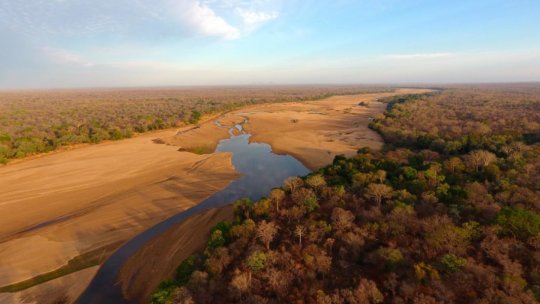[ad_1]
University of Queensland (UQ) and Wildlife Conservation Society (WCS) researchers argue that the world needs more diverse, ambitious and area-specific targets for retaining important natural systems to safeguard humanity. The findings are published in Nature Ecology and Evolution.
The researchers say that current conservation targets such as Aichi Target 11, established by the Convention on Biological Diversity, currently lack the scope required to support the critical services that nature provides. The authors note that even if fully achieved, Aichi Target 11 potentially leaves 83 percent of the land and 90 percent of the ocean not effectively conserved.
Most evolutionary processes, ecological functions and biota are, and probably will always be, beyond the boundaries of nationally gazetted protected areas. This means that most of the ecosystem services on which humanity relies will be provided predominantly by areas that are not officially protected. Achieving the objectives reflected in the other Aichi Targets, and the UN’s Sustainable Development Goals, depends heavily on what happens in that 83-90 percent, the authors say.
“Humanity asks a lot of the natural world. We need it to purify our water and air, to maintain our soils, and to regulate our climate,” said lead author Associate Professor Maron of the School of Earth and Environmental Sciences at UQ. “Yet even as we increase the extent of protected areas, they don’t necessarily prevent the loss of natural systems. They’re often located in areas that might not have been lost anyway — and the current target of protecting 17 percent of terrestrial systems will never be enough to protect species as well as provide the benefits humanity needs.”
The authors argue for the need to retain enough of the Earth’s natural systems in the right places, to preserve healthy watersheds, to store carbon, to protect the last wilderness areas, and to maintain human-nature interactions, but at the moment we don’t have specific, area-based targets for all these goals.
In the article, the researchers say that that reforms are urgently needed on how we make decisions about what nature must be retained, and where. Said senior author James Watson of UQ and WCS: “It is clear that we are running out of time. Every time we analyze humanity’s footprint on the planet, we see broad-scale alteration of the last remaining intact, functioning systems. These losses are irreversible and we must acknowledge that the status quo is failing nature and humanity.”
Recent calls for the protection of “half earth” and “nature needs half,” calling for conservation of 50 percent of the planet, are bold, but the researchers believe this may still fall short of what is needed for the integrity of critical earth systems, like a stable climate.
Said Watson: “We need a big, bold plan. There is no doubt that when we add up the different environmental goals to halt biodiversity loss, stabilize run-away climate change and to ensure other critical ecosystems services such as pollination and clean water are maintained, we will need far more than 50 percent of the earth’s natural systems to remain intact. And we must remember that most nations have committed to this in various environmental treaties. It is time for nations to embrace a diverse set of bold retention targets to limit the ongoing erosion of the nature humanity relies upon.”
The paper was published as conservationists gather this week in Oxford for a major international conference on Intact Forests in the 21st Century hosted by the University of Oxford and WCS. The conference will bring together leading scientists, researchers, policy experts and practitioners from around the world to review and debate the current state of knowledge relating to intact forests, their values, the threats they face, and the most appropriate responses.
Story Source:
Materials provided by Wildlife Conservation Society. Note: Content may be edited for style and length.
[ad_2]















